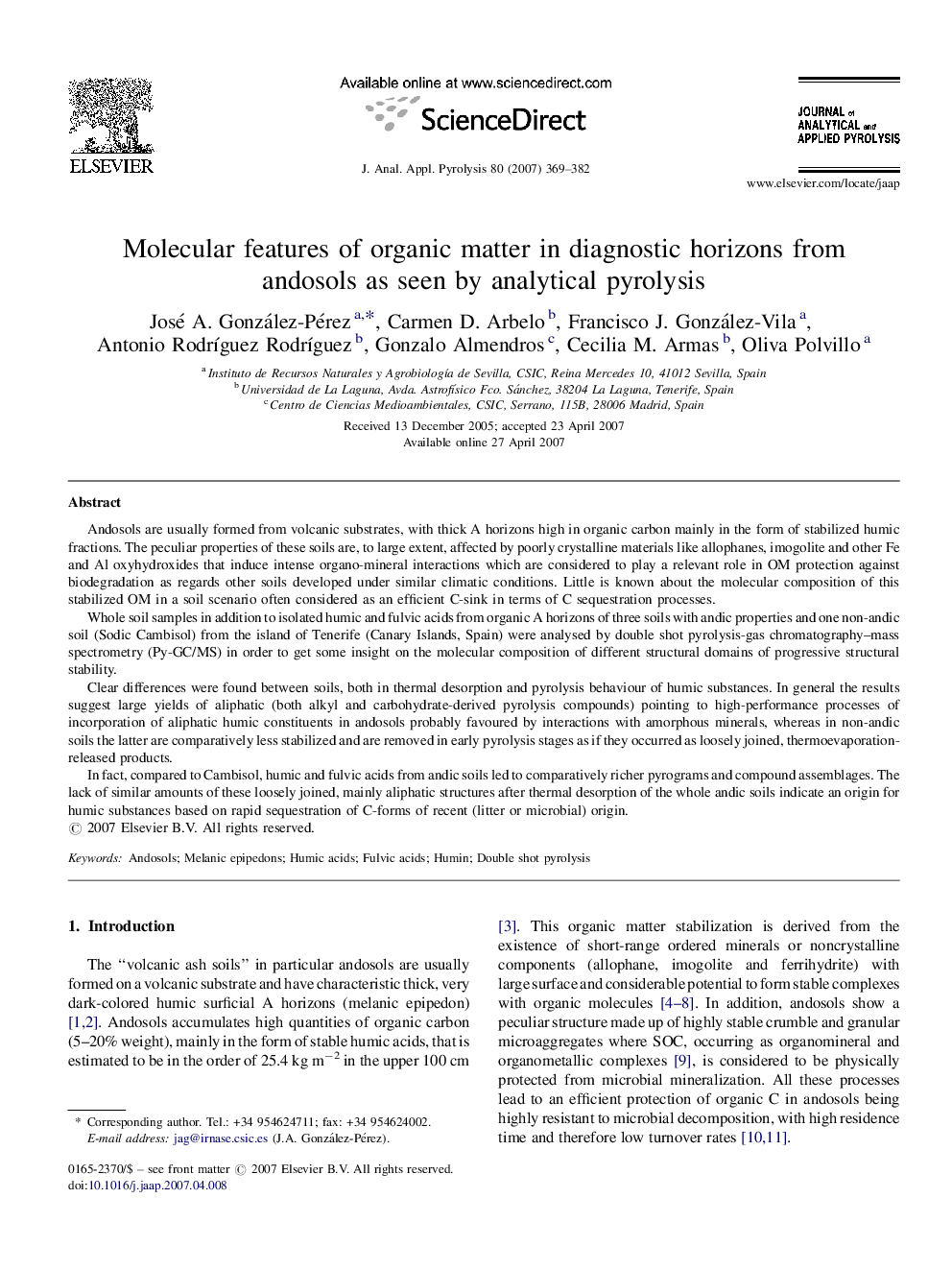| Article ID | Journal | Published Year | Pages | File Type |
|---|---|---|---|---|
| 1197734 | Journal of Analytical and Applied Pyrolysis | 2007 | 14 Pages |
Andosols are usually formed from volcanic substrates, with thick A horizons high in organic carbon mainly in the form of stabilized humic fractions. The peculiar properties of these soils are, to large extent, affected by poorly crystalline materials like allophanes, imogolite and other Fe and Al oxyhydroxides that induce intense organo-mineral interactions which are considered to play a relevant role in OM protection against biodegradation as regards other soils developed under similar climatic conditions. Little is known about the molecular composition of this stabilized OM in a soil scenario often considered as an efficient C-sink in terms of C sequestration processes.Whole soil samples in addition to isolated humic and fulvic acids from organic A horizons of three soils with andic properties and one non-andic soil (Sodic Cambisol) from the island of Tenerife (Canary Islands, Spain) were analysed by double shot pyrolysis-gas chromatography–mass spectrometry (Py-GC/MS) in order to get some insight on the molecular composition of different structural domains of progressive structural stability.Clear differences were found between soils, both in thermal desorption and pyrolysis behaviour of humic substances. In general the results suggest large yields of aliphatic (both alkyl and carbohydrate-derived pyrolysis compounds) pointing to high-performance processes of incorporation of aliphatic humic constituents in andosols probably favoured by interactions with amorphous minerals, whereas in non-andic soils the latter are comparatively less stabilized and are removed in early pyrolysis stages as if they occurred as loosely joined, thermoevaporation-released products.In fact, compared to Cambisol, humic and fulvic acids from andic soils led to comparatively richer pyrograms and compound assemblages. The lack of similar amounts of these loosely joined, mainly aliphatic structures after thermal desorption of the whole andic soils indicate an origin for humic substances based on rapid sequestration of C-forms of recent (litter or microbial) origin.
